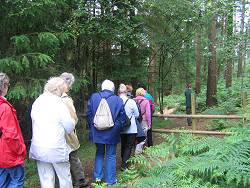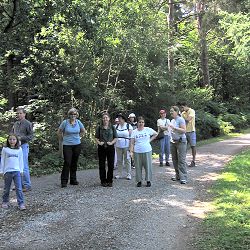Summary
What is the best way to work out how many and how often people visit your woodland or forest?
Summary

Building on the Forestry Commission’s existing guidance on visitor monitoring, Forest Research carried out a full review of methodologies and techniques used to estimate how many people visit a woodland site and the number of visits they make. The team assessed the advantages and disadvantages of each method, including surveys, observations and counters.
Key findings and recommendations
Findings
- Site-specific estimates: surveys are suitable, but sampling must consider the location of survey points, time of day, days of the week and the season
- Population level estimates: national, regional or site ‘catchment’ surveys can help to estimate numbers, although these will include non-users, so can be used to assess barriers to access and use
- Counting: electronic and mechanical counters are available, many with integrated data collection units and automated controls for start times and sampling periods; manual counting by staff or contractors is also possible
- Frequency: more frequent monitoring is necessary at new sites or where significant developments have recently taken place
Recommendations
- Visitor monitoring should form part of a wider strategy to understand how people use, engage with, and benefit from a given site
- Operational staff and site managers should help to choose the most appropriate tools and methods, based on their knowledge of a given site, its visitors and the local context
- Initiatives to estimate numbers should have clear objectives and should support delivery against national, regional or local aims and objectives
- Links to appropriate resources (e.g. toolkits, example questionnaires and sampling strategies) can help practitioners and forest managers decide what is useful for their area or site and determine what resources they may need to estimate numbers
Publications
Funders and partners
Commissioned and funded by the Forestry Commission.
Contact
Status
2010.
